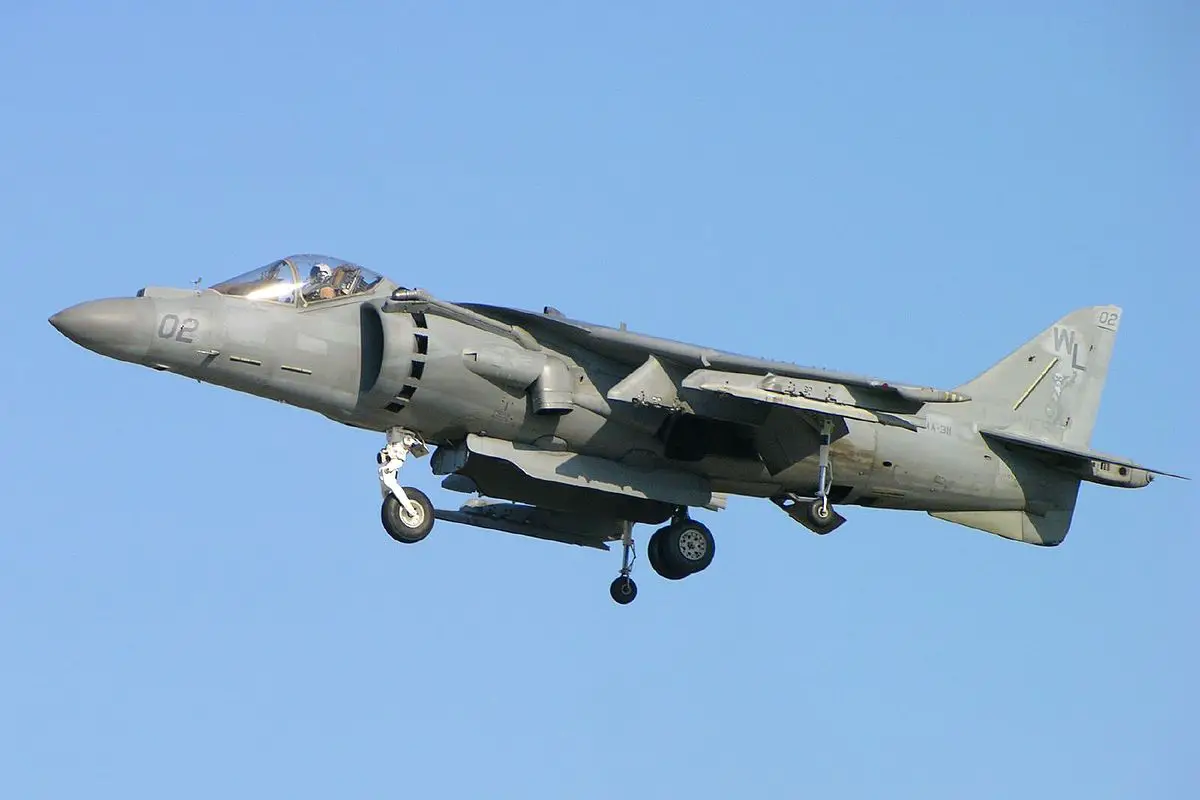The McDonnell Douglas (now Boeing) AV-8B Harrier II is a single-engine ground-attack aircraft that constitutes the second generation of the Harrier Jump Jet family. Capable of vertical or short takeoff and landing (V/STOL), the aircraft was designed in the late 1970s as an Anglo-American development of the British Hawker Siddeley Harrier, the first operational V/STOL aircraft. The aircraft is primarily employed on light attack or multi-role missions, ranging from close air support of ground troops to armed reconnaissance. The AV-8B is used by the United States Marine Corps (USMC), the Spanish Navy, and the Italian Navy. A variant of the AV-8B, the British Aerospace Harrier II, was developed for the British military, while another, the TAV-8B, is a dedicated two-seat trainer.

Typically operated from small aircraft carriers, large amphibious assault ships and simple forward operating bases, AV-8Bs have participated in numerous military and humanitarian operations, proving themselves versatile assets. U.S. Army General Norman Schwarzkopf named the USMC Harrier II as one of several important weapons in the Gulf War. The aircraft took part in combat during the Iraq War beginning in 2003. The Harrier II has served in Operation Enduring Freedom in Afghanistan since 2001, and was used in Operation Odyssey Dawn in Libya in 2011. Italian and Spanish Harrier IIs have taken part in overseas conflicts in conjunction with NATO coalitions. During its service history, the AV-8B has had a high accident rate, related to the percentage of time spent in critical take-off and landing phases. USMC and Italian Navy AV-8Bs are to be replaced by the Lockheed Martin F-35B Lightning II, with the former expected to operate its Harriers until 2025.

The AV-8B underwent standard evaluation to prepare for its USMC service. In the operational evaluation (OPEVAL), lasting from 31 August 1984 to 30 March 1985, four pilots and a group of maintenance and support personnel tested the aircraft under combat conditions. The aircraft was graded for its ability to meet its mission requirements for navigating, acquiring targets, delivering weapons, and evading and surviving enemy actions, all at the specified range and payload limits. The first phase of OPEVAL, running until 1 February 1985, required the AV-8B to fly both deep and close air support missions (deep air support missions do not require coordination with friendly ground forces) in concert with other close-support aircraft, as well as flying battlefield interdiction and armed reconnaissance missions. The aircraft flew from military installations at Marine Corps Base Camp Pendleton and Naval Air Weapons Station China Lake in California, Canadian Forces Base Cold Lake in Canada, and MCAS Yuma in Arizona.

The USMC AV-8B saw extensive action in the Gulf War of 1990–91. The AV-8B was first used in the war on the morning of 17 January 1991, when a call for air support from an OV-10 Bronco forward air controller against Iraqi artillery that was shelling Khafji and an adjacent oil refinery, brought the AV-8B into combat. The following day, USMC AV-8Bs attacked Iraqi positions in southern Kuwait. Throughout the war, AV-8Bs performed armed reconnaissance and worked in concert with coalition forces to destroy targets. During Operations Desert Shield and Desert Storm, 86 AV-8Bs amassed 3,380 flights and about 4,100 flight hours, with a mission availability rate of over 90 percent. Five AV-8Bs were lost to enemy surface-to-air missiles, and two USMC pilots were killed. The AV-8B had an attrition rate of 1.5 aircraft for every 1,000 sorties flown. U.S. Army General Norman Schwarzkopf later named the AV-8B among the seven weapons—along with the F-117 Nighthawk and AH-64 Apache—that played a crucial role in the war.















